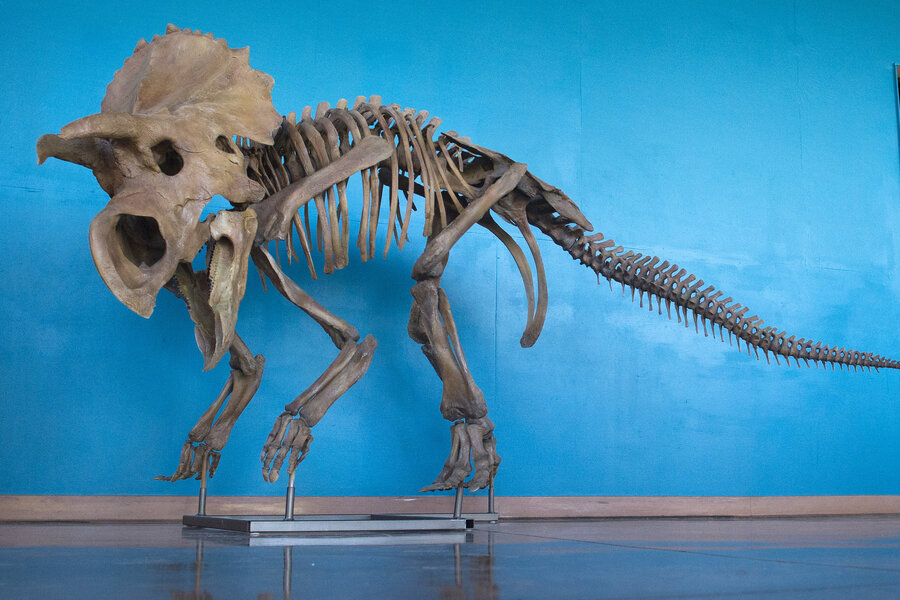Possible new dinosaur species discovered in Montana
Loading...
Dinosaurs can give us remarkable insight into what the world was like millions of years ago. Typically, researchers count themselves lucky if they find a few scattered bones, but archaeologists in Montana unearthed a near-complete skeleton that could belong to a new species.
Three years ago, a field excavation team from Triebold Paleontology Inc. stumbled upon over 200 bones in the Judith River Formation in Montana. Dating back 75 million years, the bones were carefully uncovered and removed from solid sandstone.
“Much to the surprise of the researchers, there was also some mummified soft tissue that had survived around [the dinosaur's] hip area,” reported CBS News. “They also found some Tyrannosaurus-like teeth, likely related, but don't believe this dinosaur was a scavenger.”
Originally, researchers thought their dinosaur might be of the Avaceratops species, a long-tailed herbivore believed to have roamed the Earth during the Late Cretaceous Period, according to the Gazette. Lacking a scientific name, they nicknamed their finding “Ava.”
But after conducting months of research and testing in conjunction with the Rocky Mountain Dinosaur Resource Center (RMDRC), they realized there were enough differences to signal they might be looking at a never-before-seen species, though this has yet to be confirmed by experts.
"It's got these pointy little horns on the cheeks of it,” said Anthony Maltese, curator at the Rocky Mountain Dinosaur Resource Center and excavation team member, in an interview with HNGN. “It's got spikes all around the frill that aren't usually found on these little, juvenile dinosaurs."
On Wednesday, a cast model of the dinosaur skeleton was revealed at the RMDRC in Woodland Park, Colorado. Nearly 85 percent of the skeleton was original, but a few missing pieces were recreated using digital mirror imaging and 3D printing.
This is nowhere near the first dinosaur discovery for Montana, though. In fact, the Judith River Dinosaur Institute has chronicled seven dinosaur excavations, including four brachylophosaurus specimens, dubbed “Elvis” (1994), “Leonardo” (2000), “Roberta”, and “Peanut” (2004).
Touted as a “paleontological hotbed,” Montana even has its own Dinosaur Trail that includes fourteen dinosaur museums, state parks, and field digs, offering a complete hands-on experience.
“Many have described [paleontology] as a surreal experience – something hard to describe but life-changing nonetheless,” writes the Judith River Dinosaur Institute. “Some have come to appreciate not just the fossils but our place as humans within earth’s vast timeline.”





